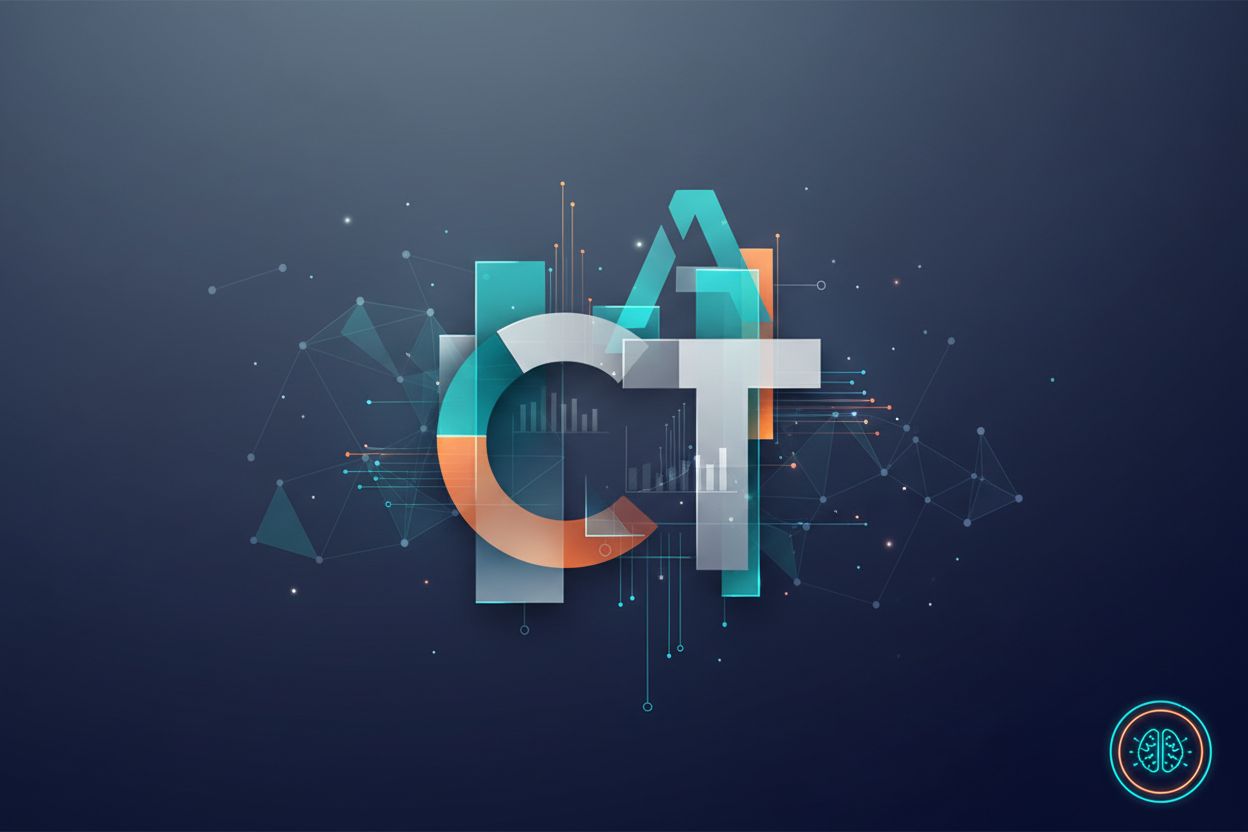Revolutionizing Content Strategy: How AI-Driven Curation Tools Amplify Marketing ROI
TL;DR
The Rise of AI in Content Curation: A New Era for Marketing
AI is changing the content landscape. How can marketers harness its power to boost their ROI?
AI-driven content curation uses artificial intelligence to automatically discover and filter content. (5 Best AI-Based Content Curation Tools in 2025 - Numerous.ai) It ensures that relevant information reaches the right audience at the right time. This approach helps marketers stay efficient and effective in a saturated digital world.
- Automated discovery and filtering: AI algorithms scan vast amounts of data to identify relevant content. (Using AI for Data Analysis: The Ultimate Guide (2025) - Luzmo) This saves time and effort compared to manual methods.
- Personalized delivery: AI tailors content delivery to specific audience segments. (AI and Personalized Search Experiences: Tailoring ...) This increases engagement and relevance.
- Continuous learning: Ai systems learn from user interactions to optimize content strategy. This ensures ongoing improvement.
Marketers today face immense challenges. Ai curation helps overcome these obstacles by streamlining content strategy and improving audience engagement.
- Overcoming information overload: Ai filters out irrelevant content, ensuring marketers focus on what matters. It helps to cut through the noise.
- Enhancing efficiency: Automation frees up marketing teams to focus on creative and strategic tasks. This improves productivity.
- Improving content relevance: Ai helps deliver content that resonates with specific audience interests. This boosts engagement and drives results.
How AI Curation Tools Work in Practice: Real-World Examples
Let's dive into how these ai curation tools actually work, with a few examples.
Imagine you're a marketer for a sustainable fashion brand.
Automated Content Discovery: You'd set up an ai tool with keywords like "sustainable fashion," "eco-friendly clothing," "ethical manufacturing," and "slow fashion." The ai scans millions of articles, blog posts, social media updates, and even academic papers. It might find a new study on the environmental impact of textile waste, an interview with a designer using recycled materials, or a viral social media post about a brand's transparent supply chain.
Filtering and Relevance Scoring: The ai doesn't just grab everything. It scores content based on your keywords, the authority of the source (e.g., a reputable fashion magazine vs. a personal blog), and how recently it was published. It might flag the study on textile waste as highly relevant, the designer interview as moderately relevant, and a generic "fashion trends" article as low relevance.
Personalization and Audience Segmentation: If you have different audience segments – say, one interested in high-end sustainable luxury and another in affordable eco-friendly basics – the ai can tailor its findings. For the luxury segment, it might prioritize content from high-fashion publications and designers. For the basics segment, it might focus on practical tips for sustainable living and budget-friendly brands.
Review and Refinement: Before anything goes public, you'd review the ai's suggestions. You might see the textile waste study and decide to create a blog post summarizing its key findings, linking back to the original source. You might also find a great interview with a designer and decide to share it directly on your social media with a brief comment. The ai learns from your choices – if you consistently ignore articles from a certain type of source, it will adjust its future recommendations.
Case Study Snippet: A Tech Company's Blog
A tech company looking to establish thought leadership in cloud computing might use an ai tool to discover industry news, expert opinions, and competitor analyses. The ai could identify a new whitepaper from a major cloud provider, a podcast episode featuring a leading ai researcher, and a critical review of a new cloud security platform. The marketing team then curates the most insightful pieces, perhaps writing a brief commentary on the whitepaper for their own blog or sharing the podcast episode with their team for learning.
Selecting the Right AI Content Curation Tools: A Comprehensive Guide
Ai content curation is rapidly changing how marketers connect with their audiences. But with so many options available, how do you choose the right tools?
When selecting ai content curation tools, several key features can significantly enhance your marketing ROI:
- Content discovery capabilities: Look for tools that offer robust keyword analysis and topic modeling. These features help you identify trending and relevant content. For example, a tool that can analyze social media conversations to pinpoint emerging topics in the healthcare industry can be invaluable.
- Personalization options: The ability to segment your audience and adapt content delivery is crucial. Ai should facilitate adaptive learning, tailoring content to individual user preferences.
- Integration with existing marketing platforms: Ensure the tool seamlessly integrates with your current social media and email marketing platforms. This streamlines your workflow and ensures consistent messaging across all channels.
- Analytics and reporting: Comprehensive analytics are essential for tracking engagement metrics and ROI. Look for tools that provide insights into which content resonates most with your audience, allowing you to refine your strategy accordingly.
For instance, if you're in finance, ai can help you discover relevant news, personalize client communications, and track engagement to measure the effectiveness of your curated content.
As you evaluate tools, keep in mind that the best solution will align with your specific needs and marketing goals.
Top AI Content Curation Tools to Consider in 2024
Here are a few of the top ai content curation tools making waves this year:
- Feedly: Known for its powerful ai-powered news aggregation, Feedly helps you discover and organize content from across the web. Its "Leo" ai assistant can prioritize articles, extract key information, and even route content to your team.
- Pros: Excellent for staying on top of industry news, highly customizable, good for research.
- Cons: Can be a bit overwhelming initially, more focused on news aggregation than broader content curation.
- Curata: This platform offers a comprehensive suite of tools for content curation, including ai-driven discovery, content analysis, and workflow management. It's designed for businesses looking for a robust, end-to-end solution.
- Pros: Powerful ai for discovery and analysis, good for team collaboration, robust reporting.
- Cons: Can be more expensive, might be overkill for smaller teams.
- BuzzSumo: While not exclusively a curation tool, Buzzsumo's strength lies in identifying trending content and influential creators. You can use it to find popular articles, see what content performs best for competitors, and discover relevant topics to curate.
- Pros: Great for trend spotting and influencer identification, helps understand content virality.
- Cons: Less focused on automated filtering and delivery compared to dedicated curation tools.
- Pocket (with its ai features): Pocket is a popular tool for saving articles to read later, but its ai capabilities are growing. It can suggest related articles and help you discover new content based on your saved items.
- Pros: Simple to use, great for personal content discovery and saving, increasingly smart suggestions.
- Cons: Less enterprise-focused, limited team collaboration features.
Integrating AI Curation into Your Marketing Workflow: Best Practices
Ai content curation is transforming marketing, but how do you make it work for your brand? Let's explore key strategies to seamlessly integrate ai into your marketing workflow.
To start, outline a clear, step-by-step integration process. This ensures a smooth transition and maximizes the benefits of ai-driven curation.
- Define Content Goals and Target Audience: Clearly define what you aim to achieve with your content and who you are trying to reach. This will guide the ai in selecting relevant and engaging content.
- Select and Configure AI Curation Tools: Choose tools that align with your goals and provide the necessary features, such as content discovery, personalization, and integration with existing platforms.
- Automate Content Discovery and Filtering: Set up ai algorithms to automatically scan and filter vast amounts of content based on predefined criteria. This saves time and ensures you focus on the most relevant material.
- Review and Refine AI-Curated Content: While ai automates the process, human oversight is crucial. Review the curated content to ensure it aligns with your brand voice and provides value to your audience. This step is vital for maintaining quality and brand consistency.
- Schedule and Distribute Content Across Channels: Use scheduling tools to distribute your curated content across various channels, ensuring consistent and timely delivery.
In healthcare, ai can curate the latest medical research and news for healthcare professionals. In retail, ai can identify trending products and customer reviews to inform marketing campaigns. In finance, ai can gather market insights and economic news to share with clients.
By following these best practices, you can effectively integrate ai curation into your marketing workflow, enhancing efficiency and driving better results.
Next, we'll explore how to optimize your content strategy for engagement and ROI.
Ethical Considerations and Best Practices for AI Content Curation
Ai content curation offers exciting possibilities, but it's crucial to address ethical considerations to maintain user trust and avoid potential pitfalls. How can marketers ensure responsible ai implementation?
One key area is addressing bias in ai algorithms, which can unintentionally amplify existing prejudices. To mitigate this, ensure that your ai systems use diverse and representative content sources. Implement rigorous fact-checking processes to verify content accuracy.
According to Kontent.ai, it's essential to regularly evaluate and adjust the criteria used by ai for learning curation. This is directly relevant to bias because if the initial criteria are biased, the ai will perpetuate that bias. By regularly checking and adjusting these criteria, we can actively work to remove or reduce bias in the content the ai surfaces.
Avoid creating echo chambers by actively working against filter bubbles. This means intentionally exposing your audience to diverse perspectives, even if they fall slightly outside their usual interests.
Data privacy is another critical concern. Always obtain user consent for data collection and implement robust security measures to protect user data. Be transparent about ai's role in content curation. Inform users about how ai influences the content they see.
As Quuu notes, ai personalization requires careful implementation to respect user privacy and add real value. This highlights that while ai can tailor content, it must do so ethically, ensuring that user data is handled responsibly and that the personalization genuinely benefits the user, rather than just serving commercial interests without regard for privacy.
By addressing these ethical considerations, marketers can harness the power of ai content curation responsibly.
Next, we'll explore how to optimize your content strategy for engagement and ROI.
Measuring the Impact: How to Track ROI of AI-Driven Content Curation
Are you pouring resources into ai-driven content curation but unsure if it's paying off? Measuring the ROI of these tools is essential to justify your investment and refine your strategies. Let's explore how to track the impact effectively.
Engagement metrics such as likes, shares, and comments show how well your content resonates with your audience. High engagement often correlates with increased brand awareness and customer loyalty.
Track website traffic and lead generation to see if curated content drives visitors to your site and converts them into potential customers. Use tools like Google Analytics to monitor these metrics.
Monitor conversion rates and sales to determine if curated content influences purchasing decisions. For example, if you curate product reviews, track whether readers are more likely to buy those products.
Evaluate customer retention and lifetime value. Engaging content can foster stronger relationships, leading to repeat business and increased customer value.
Google Analytics helps you understand how users interact with your website after engaging with curated content. Track metrics like bounce rate, time on site, and pages per session.
Use social media analytics platforms to monitor engagement, reach, and traffic from your curated content. These platforms provide insights into what resonates with your audience.
Marketing automation platforms like HubSpot can help you track leads generated from curated content and measure their progression through the sales funnel.
Implement A/B testing to compare the performance of different content curation strategies. This allows you to optimize your approach based on data-driven insights.
By consistently tracking these metrics, you can gain a clear understanding of the ROI of your ai-driven content curation efforts.
Next, we'll discuss how to optimize your content strategy for maximum ROI.
The Future of AI in Content Curation: Trends and Predictions
The future of ai in content curation looks promising. Expect smarter tools that learn your preferences. What trends should marketers watch?
- Expect smarter recommendation engines. Ai will better understand user preferences, anticipating what you want to see before you even know it.
- There will be more ai-generated content, like articles written for you alone, or personalized summaries of complex topics.
- Look for personalized experiences across devices. Ai will link your digital life, ensuring seamless transitions from your phone to your laptop to your smart TV, with content that follows you. For example, if you're researching a new camera on your laptop, an ai might later suggest relevant video reviews on your tablet or even highlight camera deals in a smart mirror display.
- Consider integration with augmented and virtual reality. Ai will make virtual experiences feel more personal. Imagine attending a virtual conference where ai curates relevant breakout sessions based on your professional interests in real-time, or exploring a virtual showroom where ai highlights products tailored to your past purchases and browsing history.
As ai evolves, marketers must adapt to harness its full potential.






